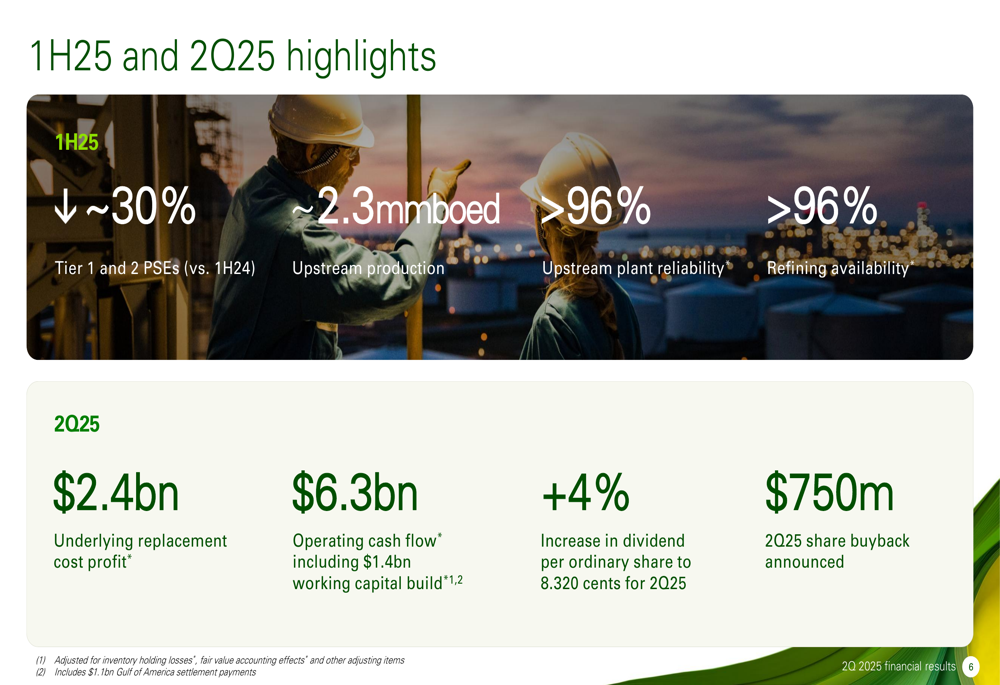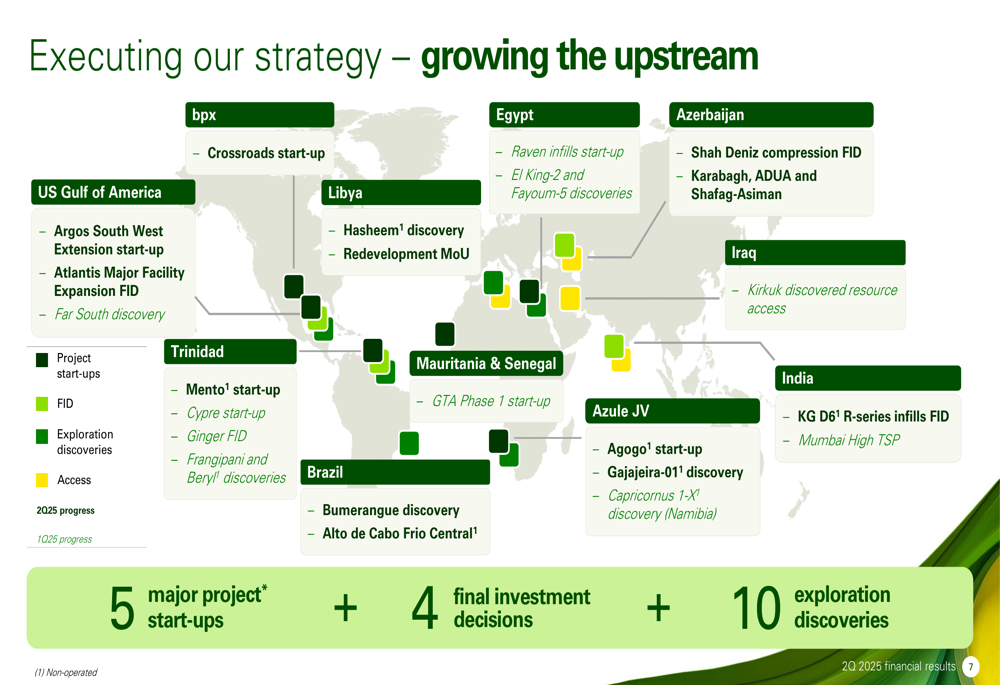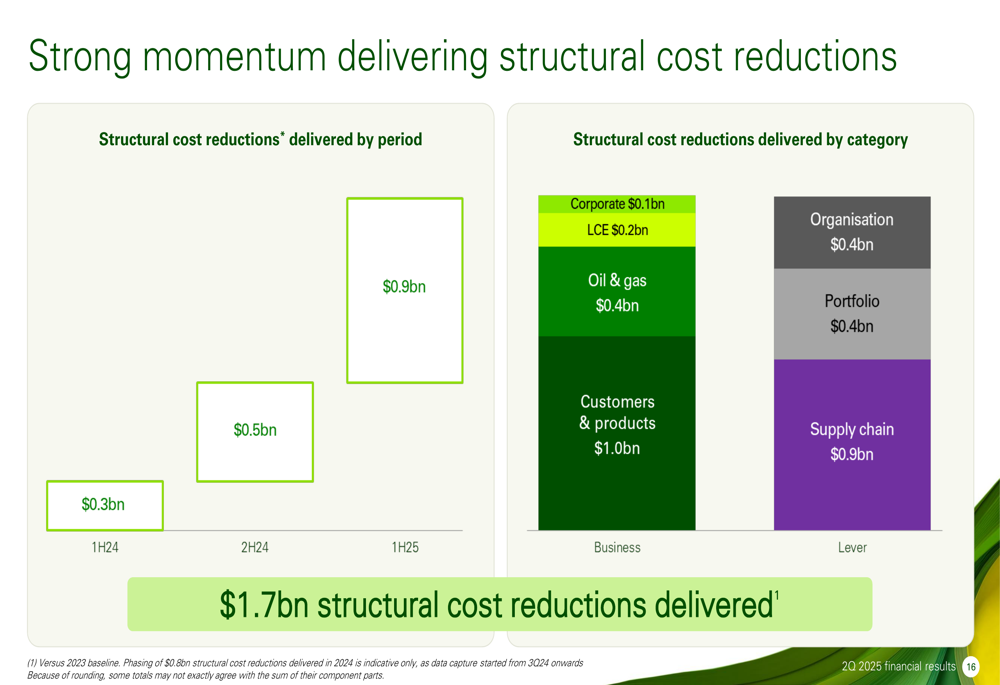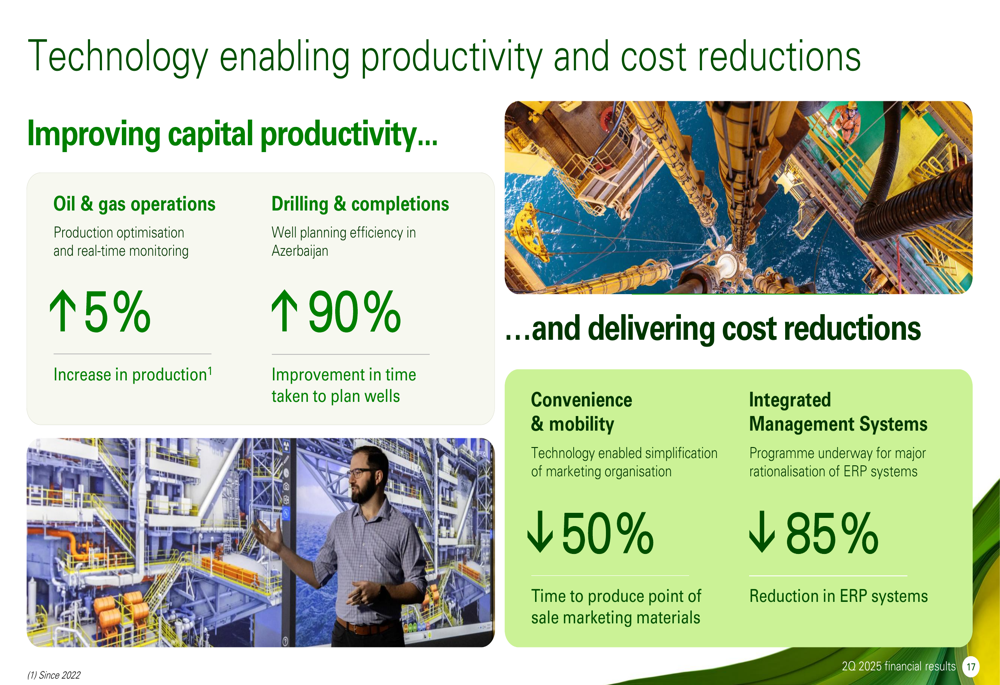Asia FX cautious amid US govt shutdown; yen tumbles after Takaichi’s LDP win
Introduction & Market Context
BP PLC (NYSE:BP) delivered strong second-quarter results that exceeded analyst expectations, according to the company’s Q2 2025 financial results presentation. The energy giant reported an underlying replacement cost profit of $2.4 billion, significantly outperforming forecasts with earnings per share of $0.90 compared to the expected $0.67 - a 34.33% positive surprise.
The company’s shares responded positively to the results, rising 4.28% in pre-market trading to $33.88 following the announcement. According to the latest data, BP’s stock is currently trading at $34.07, near the middle of its 52-week range of $25.22 to $35.55.
Quarterly Performance Highlights
BP reported robust operational and financial performance for Q2 2025, with several key metrics showing improvement. The company generated $6.3 billion in operating cash flow, which included a $1.4 billion working capital build. Notably, BP increased its dividend by 4% to 8.320 cents per ordinary share and announced a new $750 million share buyback program.
As shown in the following comprehensive highlights from the quarter:

Operational performance remained strong, with upstream production at approximately 2.3 million barrels of oil equivalent per day (mmboed). Both upstream plant reliability and refining availability exceeded 96%, demonstrating BP’s continued focus on operational efficiency. The company also reported a 30% reduction in Tier 1 and 2 process safety events compared to the first half of 2024.
Detailed Financial Analysis
BP’s underlying results for Q2 2025 showed strength across multiple business segments. The Gas & low carbon energy unit contributed $1.5 billion to the underlying replacement cost profit before interest and tax (RCPBIT), while Oil production & operations added $2.3 billion, and the Customers & products segment delivered $1.5 billion.
The detailed breakdown of BP’s Q2 2025 financial results is illustrated in this comprehensive table:

The company’s balance sheet continues to strengthen, with net debt decreasing to $26.0 billion. This reduction was primarily driven by higher operating cash flow and divestment proceeds exceeding cash outflows. Capital expenditure for the quarter was $3.4 billion, while divestment and other proceeds totaled $1.4 billion.
BP’s cash flow and balance sheet details are presented in this financial summary:

Strategic Initiatives
BP continues to execute its strategic plan across multiple fronts. In the upstream segment, the company is progressing with major projects globally, including developments in the US Gulf of America, Libya, Egypt, Azerbaijan, Iraq, Trinidad, Mauritania & Senegal, and Brazil.
The company’s global upstream strategy is visualized in this world map highlighting key projects:

A significant focus of BP’s strategy is delivering structural cost reductions. The company has already achieved $1.7 billion in structural cost reductions across various business segments, with a target of $4-5 billion by the end of 2027. These reductions span corporate functions, oil and gas operations, customer products, and supply chain improvements.
The progress on structural cost reductions is detailed in this breakdown:

Technology is playing a crucial role in enabling productivity improvements and cost reductions across BP’s operations. In oil and gas operations, production optimization and real-time monitoring led to a 5% increase in production. Drilling efficiency in Azerbaijan improved by 90% in well planning time, while marketing material turnaround in the convenience and mobility segment was reduced by 50%.
These technology-driven improvements are highlighted in the following summary:

BP is also reshaping its portfolio through strategic reviews and divestments. The company has agreed to sell its US onshore wind assets, completed the formation of the JERA Nex bp joint venture, and is further focusing its hydrogen and carbon capture and storage portfolio. Additionally, the strategic review of Castrol is progressing, while sale processes for the Netherlands mobility business, Austria retail operations, and Gelsenkirchen refinery are advancing.
Forward-Looking Statements
Looking ahead, BP has outlined clear financial targets through 2027. The company aims to achieve greater than 20% compound annual growth rate (CAGR) in adjusted free cash flow from 2024 to 2027, reduce net debt to $14-18 billion by the end of 2027, and deliver a group return on average capital employed (ROACE) exceeding 16% by the end of 2027.
BP’s primary financial targets are summarized in this overview:

For the third quarter of 2025, BP expects slightly lower reported upstream production, seasonally higher customer volumes, and significantly lower planned refinery turnaround activity. The company also anticipates income taxes paid to be around $1 billion higher than in the previous quarter.
Capital expenditure is projected at approximately $14.5 billion for 2025 and $13-15 billion annually for 2026-2027. BP remains committed to its shareholder distribution policy, with an expected annual dividend increase of at least 4% and 30-40% of operating cash flow returned to shareholders through dividends and share buybacks.
The company’s adjusted free cash flow is expected to grow from $10.3 billion in 2024 to approximately $14 billion in 2027, driven by improvements in downstream operations, low carbon energy initiatives, and upstream performance, as illustrated in this cash flow growth projection:

CEO Murray Auchincloss emphasized during the earnings call that while the company is encouraged by its early progress, "We are two quarters into a twelve-quarter plan. And while we’re encouraged by our early progress, we know there is much, much more to do." This statement reflects BP’s commitment to executing its strategic plan while acknowledging the challenges ahead in a dynamic energy market.
Full presentation:
This article was generated with the support of AI and reviewed by an editor. For more information see our T&C.
